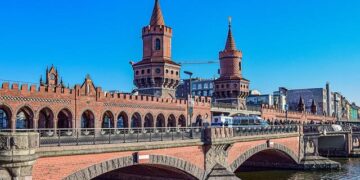The Air Quality Crisis: A Look at Europe’s Most Polluted Areas
Understanding the Current Hazardous Air Conditions
Air pollution remains a pressing issue in various regions of Europe, with certain cities being particularly health/freudenfreude-the-power-of-celebrating-others-success/” title=”Freudenfreude: The Power of Celebrating Others’ Success”>affected. Residents in these heavily polluted areas are often subjected to some of the most toxic air quality on the continent, impacting their overall health and well-being.
Hidden Dangers: Effects on Health and Environment
Exposure to poor air quality can lead to serious health complications, including respiratory illnesses, cardiovascular diseases, and even premature death. Recent studies have highlighted alarming statistics; for instance, research from the European Environment Agency indicates that air pollution is responsible for over 400,000 premature deaths each year across Europe. This crisis doesn’t just endanger human lives—ecosystems also suffer as pollutants compromise biodiversity.
The Regions at Risk
Certain urban centers frequently top lists of places with severe air contamination. For example, cities like Warsaw and Budapest rank among those facing significant challenges due to high levels of particulate matter (PM10) and nitrogen dioxide (NO2). These pollutants often stem from vehicular emissions, industrial activities, and residential heating.
Current Initiatives: Tackling Air Quality Issues
In response to this ongoing crisis, European governments are implementing stricter regulations aimed at improving air standards. Efforts include enhancing public transportation systems to reduce vehicle reliance while investing in green technologies such as electric buses and cars. Furthermore, initiatives promoting awareness around sustainable practices can empower individuals to contribute positively towards cleaner environments.
Personal Steps Towards Cleaner Air
Individuals can also make a difference by adopting eco-friendly habits like using bicycles for short distances or participating in local tree planting events that help absorb airborne toxins. It’s crucial for communities to come together in committing toward reducing pollution levels locally.
Conclusion: A Call for Collective Action
Given the grave impact of poor air quality on both personal health and environmental stability within Europe’s most affected regions—tackling this issue requires not only governmental intervention but also community-driven efforts toward sustainability. By raising awareness about these dangers while advocating for practical solutions today we pave the way toward healthier living conditions tomorrow.































